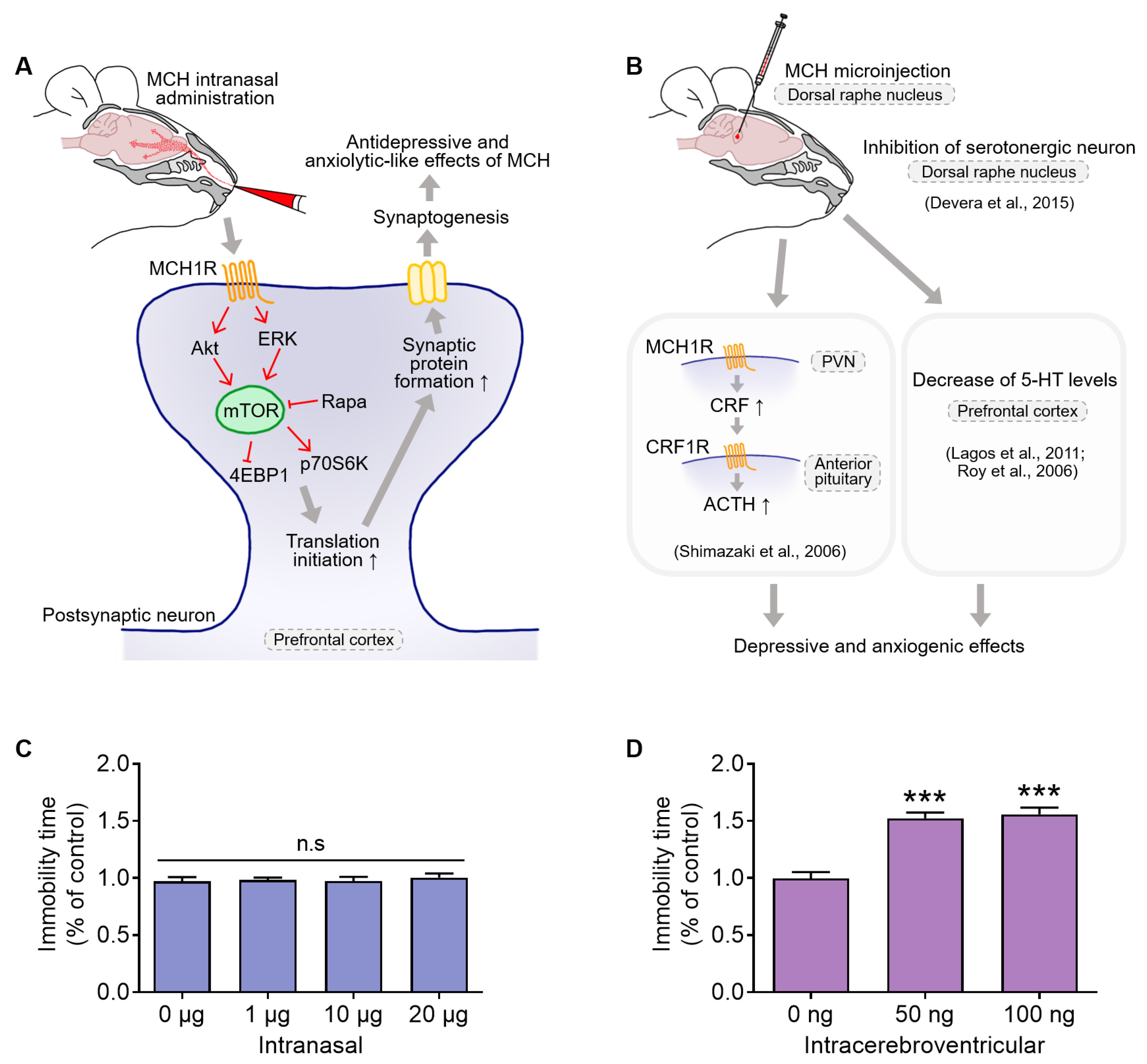
Fig. 6. The effect of MCH on depression- or anxiety-like behaviors is based on the route of administration. (A) In this study, intranasal administration of MCH produced antidepressant- and anxiolytic-like behaviors in both rodent models. MCH treatment intranasally increases the activation of Akt and ERK, and these induced the phosphorylation of mTOR. Phosphorylation of mTOR hyperphosphorylates 4EBP1 and p70S6K, thus promoting an increase in synaptic formation in the PFC. However, pretreatment with the mTOR inhibitor, rapamycin prevented these changes. (B) In contrast, a microinjection of MCH into the DRN induced depression- and anxiogenic-like behaviors. Previous studies have suggested that a microinjection of MCH induces depression-like and anxiogenic effects possibly via the inhibition of serotonergic neurons in the DRN, increasing the secretion of CRF, which promotes the release of ACTH from the anterior pituitary, and a decrease in 5-HT levels in the PFC. (C) Intranasal administration of MCH produced no changes in immobility time in the TST, whereas (D) microinjection of MCH into the DRN induced depression-like behaviors in the TST. Data represent the means±SEM. ***p<0.001 vs. 0 μg or 0 ng.
© Exp Neurobiol


